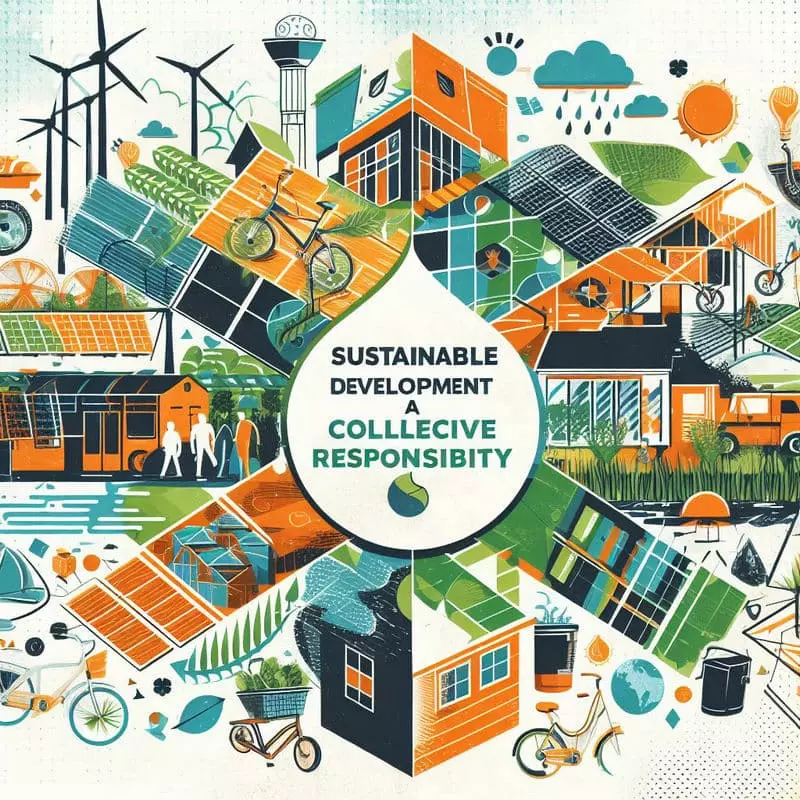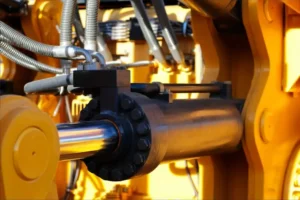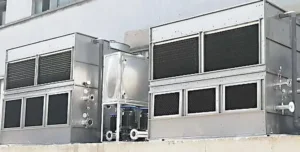ประสิทธิภาพการใช้พลังงาน
- กระบวนการทำความร้อนโดยตรง: เตาเหนี่ยวนำสร้างความร้อนภายในวัตถุให้ความร้อนโดยตรงผ่านการเหนี่ยวนำแม่เหล็กไฟฟ้า, โดยไม่จำเป็นต้องถ่ายโอนพลังงานความร้อนผ่านการเผาไหม้แบบดั้งเดิมหรือความร้อนของสื่อภายนอก. วิธีการทำความร้อนโดยตรงนี้ช่วยหลีกเลี่ยงการสูญเสียความร้อนในระหว่างการส่งพลังงานและปรับปรุงการใช้พลังงาน.
- ความร้อนอย่างรวดเร็วและมีประสิทธิภาพสูง: เตาหลอมเหนี่ยวนำสามารถสร้างอุณหภูมิสูงและให้ความร้อนได้อย่างรวดเร็ว. เมื่อเทียบกับวิธีการทำความร้อนแบบดั้งเดิม, เตาหลอมเหนี่ยวนำสามารถแปลงพลังงานไฟฟ้าเป็นพลังงานความร้อนได้เร็วขึ้นและมีประสิทธิภาพ, ลดขยะพลังงาน.
- การควบคุมอุณหภูมิที่แม่นยำ: เตาเหนี่ยวนำมีความสามารถในการควบคุมอุณหภูมิที่ดีและสามารถควบคุมการกระจายอุณหภูมิและการเปลี่ยนแปลงได้อย่างแม่นยำในระหว่างกระบวนการทำความร้อนเพื่อหลีกเลี่ยงการใช้พลังงานมากเกินไป.
- ไม่จำเป็นต้องอุ่นและเก็บรักษาความร้อน: เพราะเตาเหนี่ยวนำสามารถทำให้วัตถุร้อนได้อย่างรวดเร็ว, โดยปกติจะไม่จำเป็นต้องใช้กระบวนการอุ่นหรือการเก็บรักษาความร้อนเป็นเวลานาน, ประหยัดพลังงานเพิ่มเติมที่จำเป็นสำหรับการอุ่น.
- การแปลงที่มีประสิทธิภาพสูง: สนามแม่เหล็กไฟฟ้าภายในเตาเหนี่ยวนำสามารถแปลงพลังงานไฟฟ้าเป็นพลังงานความร้อนได้โดยตรง, และประสิทธิภาพการแปลงสูง. พลังงานไฟฟ้าส่วนใหญ่สามารถแปลงเป็นความร้อนที่มีประสิทธิภาพ, ลดการเสียพลังงาน.
อัตราการใช้พลังงานของ เตาเหนี่ยวนำ ค่อนข้างสูง, เพราะมันสร้างความร้อนภายในวัตถุให้ความร้อนโดยตรง, ลดการสูญเสียพลังงานในการส่งพลังงานความร้อน, และสามารถควบคุมกระบวนการทำความร้อนได้อย่างรวดเร็วและแม่นยำเพื่อหลีกเลี่ยงการใช้พลังงานมากเกินไป. สิ่งนี้ทำให้เตาหลอมเหนี่ยวนำเป็นอุปกรณ์ทำความร้อนที่ประหยัดพลังงานในภาคอุตสาหกรรมหลายแห่งและช่วยลดการใช้พลังงานและผลกระทบต่อสิ่งแวดล้อม.

การลดของเสียและการปล่อยมลพิษ
- ลดการปล่อยก๊าซไอเสีย: เตาหลอมเหนี่ยวนำมักไม่จำเป็นต้องเผาเชื้อเพลิงในระหว่างกระบวนการทำความร้อน, ดังนั้นพวกเขาจึงไม่ผลิตก๊าซไอเสียเผาไหม้, เช่นคาร์บอนไดออกไซด์, คาร์บอนมอนอกไซด์และการปล่อยก๊าซที่เป็นอันตรายอื่น ๆ ที่เกิดจากเตาเผาถ่านหินหรือเตาหลอมก๊าซ. สิ่งนี้ช่วยลดการปล่อยมลพิษในบรรยากาศ.
- ลดการปล่อยน้ำเสีย: กระบวนการทำความร้อนของเตาหลอมเหนี่ยวนำมักจะไม่เกี่ยวข้องกับการใช้น้ำ, ดังนั้นเมื่อเทียบกับวิธีการทำความร้อนแบบดั้งเดิมที่ต้องใช้น้ำเย็นหรือสื่อของเหลวอื่น ๆ, เตาเผาไม่ได้ผลิตการปล่อยน้ำเสีย.
- ลดการสร้างขยะมูลฝอย: ในระหว่างกระบวนการทำความร้อนของเตาเหนี่ยวนำ, ขยะมูลฝอยเช่นเถ้าถ่านหินและถ่านหินเป็นเชื้อเพลิงมักจะไม่เกิดขึ้น. การให้ความร้อนจากถ่านหินถ่านหินหรือก๊าซแบบดั้งเดิมมีแนวโน้มที่จะผลิตเถ้าและขยะมูลฝอยจำนวนมาก, ซึ่งไม่ได้เกิดขึ้นกับเตาหลอมเหนี่ยวนำ.
- นำกลับมาใช้ซ้ำ: กระบวนการทำความร้อนแบบเหนี่ยวนำเตามีแนวโน้มที่จะผลิตเศษหรือเศษซากน้อยลง, และเศษซากเหล่านี้มักจะเป็นโลหะหรือวัสดุรีไซเคิลอื่น ๆ. สิ่งนี้จะช่วยลดค่าใช้จ่ายในการกำจัดของเสียและส่งเสริมการใช้ของเสียซ้ำ.
แม้ว่าเตาหลอมเหนี่ยวนำจะมีข้อได้เปรียบบางประการในแง่ของการลดของเสียและการปล่อยมลพิษ, ยังมีบางแง่มุมที่ต้องระวัง. ตัวอย่างเช่น, น้ำหล่อเย็นที่ใช้ในกระบวนการผลิตเตาแบบเหนี่ยวนำอาจกำจัดความร้อนในปริมาณที่แน่นอน, ซึ่งในบางกรณีอาจต้องใช้การบำบัดน้ำเย็นที่เหมาะสม. นอกจากนี้, แหล่งที่มาของพลังงานไฟฟ้าที่จำเป็นสำหรับเตาหลอมเหนี่ยวนำอาจมีผลกระทบต่อสิ่งแวดล้อมในกระบวนการผลิตพลังงานไฟฟ้าหากไม่ใช่แหล่งพลังงานสะอาด.
เมื่อเทียบกับวิธีการทำความร้อนแบบสันดาปแบบดั้งเดิม, โดยทั่วไปแล้วเตาหลอมเหนี่ยวนำจะเป็นมิตรกับสิ่งแวดล้อมมากขึ้นในแง่ของการลดของเสียและการปล่อยมลพิษ, โดยเฉพาะอย่างยิ่งในการลดการปล่อยมลพิษในบรรยากาศและการสร้างขยะมูลฝอย.
รอยเท้าคาร์บอนและการประเมินผลกระทบต่อสิ่งแวดล้อม
- แหล่งพลังงานไฟฟ้า: แหล่งพลังงานหลักของเตาหลอมเหนี่ยวนำคือพลังงานไฟฟ้า. โดยทั่วไปแล้วเตาหลอมเหนี่ยวนำจะมีการปล่อยก๊าซคาร์บอนไดออกไซด์ต่ำกว่าหากใช้ไฟฟ้าจากแหล่งที่สะอาดเช่นแสงอาทิตย์, ลมหรือไฟฟ้าพลังน้ำ, เนื่องจากพลังงานสะอาดทำให้เกิดการปล่อยก๊าซเรือนกระจกน้อยลง. อย่างไรก็ตาม, หากไฟฟ้ามาจากเชื้อเพลิงฟอสซิล, เช่นถ่านหินหรือก๊าซธรรมชาติ, จากนั้นการปล่อยมลพิษที่เกิดขึ้นในระหว่างการผลิตไฟฟ้าจะเพิ่มการปล่อยก๊าซคาร์บอนโดยรวมของเตาเหนี่ยวนำ.
- การประเมินวงจรชีวิต: การประเมินรอยเท้าคาร์บอนยังรวมถึงการวิเคราะห์วงจรชีวิตการเหนี่ยวนำทั้งหมด, รวมถึงการผลิต, การขนส่ง, การใช้และการกำจัดเศษ. สิ่งนี้ช่วยในการประเมินผลกระทบต่อสิ่งแวดล้อมของเตาหลอมเหนี่ยวนำอย่างเต็มที่.
- ประสิทธิภาพการใช้พลังงาน: เมื่อเทียบกับวิธีการทำความร้อนแบบดั้งเดิม, เตาหลอมเหนี่ยวนำมักจะมีประสิทธิภาพการใช้พลังงานสูงขึ้นและสามารถแปลงพลังงานไฟฟ้าให้เป็นพลังงานความร้อนได้มากขึ้น, ดังนั้นการลดการปล่อยก๊าซพลังงานและก๊าซเรือนกระจก.
- การลดของเสียและการปล่อยมลพิษ: โดยทั่วไปเตาหลอมเหนี่ยวนำลดการสร้างของเสียและการปล่อยมลพิษ, เช่นการลดการปล่อยก๊าซไอเสียและการสร้างขยะมูลฝอย, จึงช่วยลดภาระด้านสิ่งแวดล้อม.
- การเปรียบเทียบกระบวนการดั้งเดิมทางเลือก: การประเมินรอยเท้าคาร์บอนสามารถเปรียบเทียบเตาหลอมเหนี่ยวนำกับวิธีการทำความร้อนแบบดั้งเดิมและประเมินความแตกต่างของการปล่อยก๊าซเรือนกระจกภายใต้งานการผลิตเดียวกัน.
การประเมินการปล่อยก๊าซคาร์บอนไดออกไซด์และผลกระทบต่อสิ่งแวดล้อมของเตาหลอมสามารถช่วยกำหนดข้อได้เปรียบในแง่ของการผลิตที่ยั่งยืนและความเป็นมิตรต่อสิ่งแวดล้อม, เช่นเดียวกับช่วยพัฒนากลยุทธ์การปรับปรุงเพื่อลดการปล่อยมลพิษและเพิ่มประสิทธิภาพการใช้พลังงาน. เมื่อเลือกเตาเหนี่ยวนำเป็นอุปกรณ์ทำความร้อน, การรับรู้ถึงการปล่อยก๊าซคาร์บอนไดออกไซด์และผลกระทบต่อสิ่งแวดล้อมจะช่วยพัฒนาตัวเลือกการผลิตที่เป็นมิตรกับสิ่งแวดล้อมและยั่งยืนมากขึ้น.

เทคโนโลยีและการปรับปรุงที่เป็นมิตรกับสิ่งแวดล้อม
- การปรับปรุงประสิทธิภาพการใช้พลังงาน: การปรับปรุงประสิทธิภาพการใช้พลังงานอย่างต่อเนื่องของเตาหลอมเหนี่ยวนำเป็นทิศทางการปรับปรุงที่สำคัญ. การใช้ระบบควบคุมอิเล็กทรอนิกส์ขั้นสูง, การปรับแต่งการออกแบบขดลวดและการกระจายสนามแม่เหล็กไฟฟ้า, และการปรับปรุงกระบวนการทำความร้อนสามารถปรับปรุงประสิทธิภาพการใช้พลังงานและลดการใช้พลังงาน.
- การใช้พลังงานสะอาด: ส่งเสริมการใช้พลังงานสะอาดสำหรับเตาหลอมเหนี่ยวนำ, เช่นพลังงานแสงอาทิตย์, พลังงานลมหรือพลังงานน้ำ, เป็นมาตรการสำคัญในการลดผลกระทบต่อสิ่งแวดล้อม. การเปลี่ยนไปใช้แหล่งพลังงานหมุนเวียนสามารถลดการปล่อยก๊าซคาร์บอน, จึงช่วยลดผลกระทบด้านสิ่งแวดล้อมเชิงลบ.
- การบำบัดของเสียและการรีไซเคิล: การวิจัยและพัฒนาเทคโนโลยีการบำบัดของเสียที่มีประสิทธิภาพมากขึ้นเพื่อประมวลผลและรีไซเคิลวัสดุของเสียหรือของเสียที่เกิดจากเตาหลอมเหนี่ยวนำเพื่อลดการปล่อยของเสียและปรับปรุงประสิทธิภาพการใช้ทรัพยากร.
- ลดรังสีแม่เหล็กไฟฟ้า: เตาหลอมเหนี่ยวนำจะผลิตรังสีแม่เหล็กไฟฟ้าในระดับหนึ่งในระหว่างการทำงาน. แม้ว่าผลกระทบต่อสุขภาพของมนุษย์มักจะมีขนาดเล็ก, ยังมีที่ว่างสำหรับการปรับปรุงเพื่อลดระดับรังสี, เช่นการออกแบบที่ดีขึ้นและการใช้วัสดุป้องกัน.
- การประเมินวงจรชีวิตและมาตรฐานสิ่งแวดล้อม: ประเมินวงจรชีวิตทั้งหมดของเตาหลอมเหนี่ยวนำและกำหนดมาตรฐานสิ่งแวดล้อมและแนวทางเพื่อให้แน่ใจว่าผลกระทบต่อสิ่งแวดล้อมจะลดลงในระหว่างการผลิต, ใช้และทิ้ง, ในขณะที่ส่งเสริมการพัฒนาที่ยั่งยืน.
- นวัตกรรมและการวิจัยและพัฒนาอย่างต่อเนื่อง: ดำเนินการวิจัยและพัฒนาเทคโนโลยีและนวัตกรรมต่อไป, และพัฒนาเทคโนโลยีเตาหลอมหลอมละลายที่มีประสิทธิภาพและเป็นมิตรมากขึ้น, รวมถึงการปรับปรุงการออกแบบให้เหมาะสมที่สุด, เพิ่มประสิทธิภาพ, ลดการปล่อยของเสีย, ฯลฯ.
เทคโนโลยีที่เป็นมิตรกับสิ่งแวดล้อมและกลยุทธ์การปรับปรุงเหล่านี้สามารถเปิดใช้งานเตาหลอมเหนี่ยวนำเพื่อลดผลกระทบต่อสิ่งแวดล้อมในระหว่างกระบวนการผลิต, ปรับปรุงประสิทธิภาพการใช้พลังงาน, ลดการปล่อยคาร์บอน, และบรรลุวิธีการผลิตที่ยั่งยืนมากขึ้น. ในเวลาเดียวกัน, การกำหนดนโยบายและมาตรฐานที่สอดคล้องกันเป็นกุญแจสำคัญในการส่งเสริมการพัฒนาที่เป็นมิตรกับสิ่งแวดล้อมของเทคโนโลยีเตาหลอมเหนี่ยวนำ.
การใช้ทรัพยากรและเศรษฐกิจแบบวงกลม
- ประสิทธิภาพการใช้วัตถุดิบ: เตาหลอมเหนี่ยวนำมักจะใช้ในการถลุงโลหะ, กระบวนการทำความร้อนและการประมวลผล, และสามารถใช้วัสดุนำไฟฟ้าได้อย่างมีประสิทธิภาพเช่นโลหะ. วิธีการทำความร้อนที่อุณหภูมิสูงและมีประสิทธิภาพช่วยปรับปรุงประสิทธิภาพการใช้งานของวัตถุดิบและลดการเสียวัตถุดิบของเสีย.
- การรีไซเคิลเศษซากและนำกลับมาใช้ซ้ำ: เศษซากที่เกิดจากเตาหลอมเหนี่ยวนำมักจะเป็นโลหะหรือวัสดุรีไซเคิลอื่น ๆ. ด้วยเทคโนโลยีการประมวลผลและการรีไซเคิลที่เหมาะสม, วัสดุของเสียเหล่านี้สามารถนำกลับมาใช้ใหม่ในการผลิต, การส่งเสริมการใช้ทรัพยากรและการรีไซเคิลซ้ำและลดความต้องการวัตถุดิบใหม่.
- แบบจำลองเศรษฐกิจแบบวงกลม: การใช้เตาหลอมเหนี่ยวนำช่วยส่งเสริมการพัฒนาแบบจำลองเศรษฐกิจแบบวงกลม. โดยการรีไซเคิลของเสียอย่างมีประสิทธิภาพ, การลดขยะทรัพยากร, และนำของเสียกลับเข้าไปในวงจรการผลิต, ระบบเศรษฐกิจแบบวงกลมที่ยั่งยืนสามารถเกิดขึ้นได้.
- การเพิ่มประสิทธิภาพการบำบัดของเสีย: เพิ่มประสิทธิภาพการรักษาของเสียที่เกิดจากเตาหลอมเหนี่ยวนำ, รวมถึงการบำบัดที่สมเหตุสมผลและการใช้ทรัพยากรของเสียตกค้าง, ของเสีย, น้ำเสีย, ฯลฯ. ตัวอย่างเช่น, สารตกค้างของเสียอาจถูกประเมินใหม่เพื่อใช้ในการผลิตผลิตภัณฑ์อื่น ๆ, และน้ำเสียอาจถูกทำให้บริสุทธิ์และนำกลับมาใช้ใหม่ผ่านการบำบัดที่เหมาะสม.
- การอนุรักษ์ทรัพยากรและความยั่งยืน: การประยุกต์ใช้เทคโนโลยีเตาหลอมเหนี่ยวนำช่วยให้บรรลุการอนุรักษ์ทรัพยากรและการใช้ประโยชน์อย่างยั่งยืน. โดยใช้วัตถุดิบอย่างมีประสิทธิภาพ, การรีไซเคิลของเสียและลดการใช้พลังงาน, การใช้ประโยชน์จากทรัพยากรธรรมชาติมากเกินไปสามารถลดลงและส่งเสริมการพัฒนาอย่างยั่งยืน.
ภายใต้การแนะนำของแนวคิดของเศรษฐกิจแบบวงกลม, เทคโนโลยีเตาหลอมเหนี่ยวนำคาดว่าจะส่งเสริมการพัฒนาอย่างยั่งยืนของการผลิตอุตสาหกรรม. โดยการปรับปรุงประสิทธิภาพการใช้ทรัพยากร, เพิ่มประสิทธิภาพการบำบัดของเสีย, และส่งเสริมการใช้ซ้ำของเสีย, เราสามารถลดการพึ่งพาทรัพยากรที่ จำกัด, บรรลุการรีไซเคิลทรัพยากร, ลดภาระด้านสิ่งแวดล้อม, และส่งเสริมการเติบโตทางเศรษฐกิจที่ยั่งยืน.

รอยเท้าทางนิเวศวิทยาและการพัฒนาที่ยั่งยืน
- รอยเท้านิเวศวิทยา: รอยเท้าทางนิเวศวิทยาคำนึงถึงผลกระทบของกิจกรรมของมนุษย์ต่อสิ่งแวดล้อม, รวมถึงทรัพยากรที่ใช้, ของเสียที่เกิดขึ้น, และแรงกดดันต่อระบบนิเวศ. สำหรับเทคโนโลยีเตาหลอมเหนี่ยวนำการเหนี่ยวนำ, การประเมินรอยเท้าทางนิเวศวิทยาหมายถึงการพิจารณาทรัพยากรที่ใช้, ของเสียและการปล่อยมลพิษที่เกิดขึ้นในระหว่างการผลิต, การใช้และการสิ้นสุดของชีวิต, รวมถึงขอบเขตของผลกระทบต่อสิ่งแวดล้อมและระบบนิเวศ.
- การพัฒนาที่ยั่งยืน: เป็นอุปกรณ์ทำความร้อนที่ประหยัดพลังงานและมีประสิทธิภาพ, เตาเหนี่ยวนำช่วยให้การผลิตอุตสาหกรรมพัฒนาไปในทิศทางที่ยั่งยืนยิ่งขึ้น. โดยการลดการใช้พลังงาน, ลดการปล่อยมลพิษ, การเพิ่มประสิทธิภาพการใช้ทรัพยากรและมาตรการอื่น ๆ, เทคโนโลยีการเหนี่ยวนำเตาหลอมช่วยส่งเสริมการพัฒนาอย่างยั่งยืนของการผลิตอุตสาหกรรม. ซึ่งหมายถึงการตอบสนองความต้องการในปัจจุบันในขณะที่ลดความเสียหายต่อสิ่งแวดล้อมและทรัพยากร, ออกจากระบบนิเวศที่ยั่งยืนมากขึ้นสำหรับคนรุ่นอนาคต.
ในแง่ของการส่งเสริมการพัฒนาที่ยั่งยืน, การประยุกต์ใช้เทคโนโลยีเตาหลอมเหนี่ยวนำช่วยลดรอยเท้าทางนิเวศวิทยาของการผลิตอุตสาหกรรม, จึงบรรลุวิธีการผลิตที่เป็นมิตรกับสิ่งแวดล้อมและยั่งยืนมากขึ้น. ผ่านการปรับปรุงเทคโนโลยี, การเพิ่มประสิทธิภาพพลังงาน, การบำบัดของเสียและการรีไซเคิลทรัพยากร, เทคโนโลยีการเหนี่ยวนำเตาหลอมสามารถมีบทบาทในเชิงบวกในสาขาอุตสาหกรรมและส่งเสริมการตระหนักถึงแนวคิดของการพัฒนาที่ยั่งยืน.








